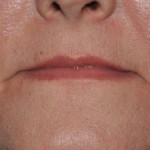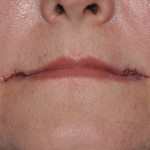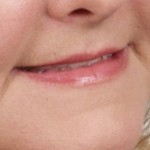Background: Aging affects all facial structures, particularly those around sphincters or apertures such as the eye. Changes around the eye are commonly perceived because they are so visible and are part of every human conversation. But just like the eye, the mouth also ages in very characteristic ways. Lines, wrinkles and thinning lips are typical atrophic changes. But falling skin and fat from the side of the face can force down the corners of the mouth, creating a constant frowning or sad expression.
While downturning of the corners of the mouth can occur from the aging process, it can look very severe in those whose mouth corners are more naturally downturned anyway. I have seen very young patients in their twenties and thirties who have a ‘congenital frown’ due to a natural u-shape to their mouth. That will become worse as they age due to the push of the falling nasolabial fold tissues from above.
Treatment options for the downturned mouth can be either non-surgical or surgical. The choice between the two is partially based on the degree of corner angulation. The use of synthetic injectable fillers can create an immediate effect by pushing up and filling out the corners. It can be effective for moderate degrees of downturn that are less than 45 degrees. In more significant cases with greater than a 45 degree angulation, only a corner of the mouth lift will work based on removing some of the overhanging skin and repositioning the corner of the mouth upward.



Case Highlights:
1) Downturning of the corners of the mouth, skin overhang and the development of marionette lines are common aging changes around the mouth
2) A corner of the mouth lift removes the skin overhang and levels out the corners of the lips. It can be done under local anesthesia as an office prfocedure.
3) Corner of the mouth lifts can be supplemented with injectable fillers or fat injections to help fill out the marionette grooves below it.
Dr. Barry Eppley
Indianapolis, Indiana


